Among the slew of new and improved features in Revit 2021, Autodesk has included several changes that will directly or indirectly impact electrical engineers. This post briefly explains each feature and what it will mean for your electrical design workflow.
Striped Rows in Schedules
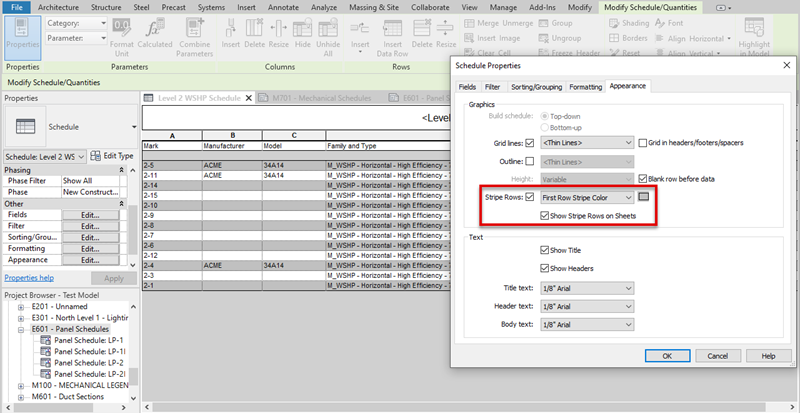
Revit 2020.1 introduced the Stripe Rows command, which added color to alternating rows in schedules, making them easier to read. With Revit 2021, you can now customize the colors for the rows, and set whether striped rows are visible on sheets. These options are available in the Properties->Appearance dialog box.
This update is a general quality-of-life improvement that will make large schedules easier to read when printed.
Panel Schedules in Sheets
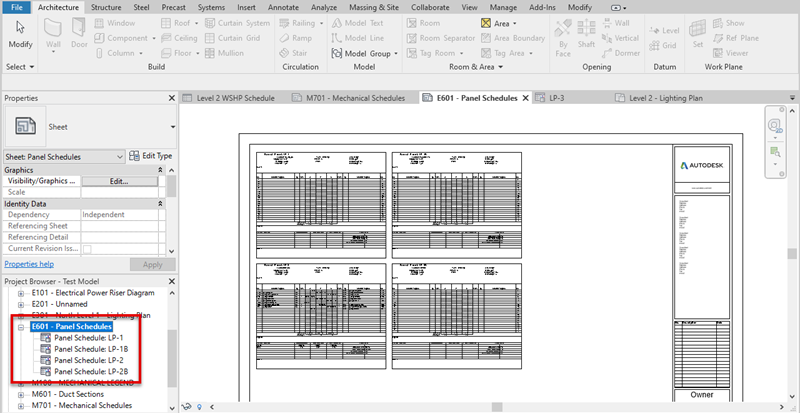
In the Project Browser, panel schedules are listed under sheets that contain them, similar to other views.
This change won’t affect how panel schedules and sheets interact; however, it will make it easier for you to track and modify the panel schedules on your sheets.
Single Phase Two-Wire Panels
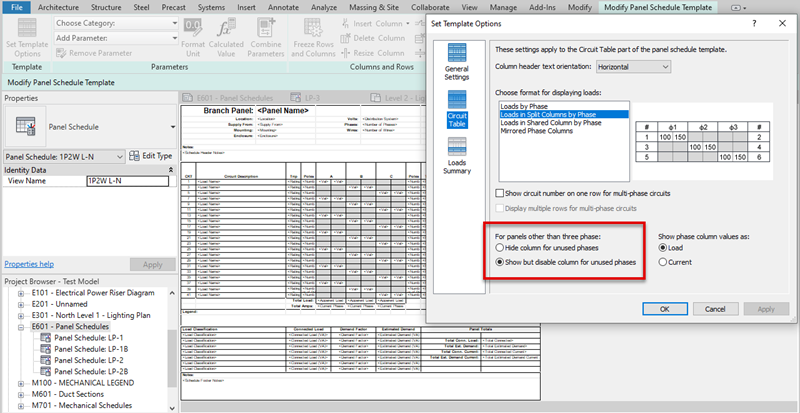
Revit 2021 supports 1P2W L-N panels, a configuration often seen in the UK and EU. Previously, users had to employ workarounds like using switchboards to model their panels.
For US-based engineers, this change probably won’t affect you (unless you’re working with lighting inverter panels, possibly). The difference you’re most likely to notice is some wording changes in the panel schedule template options. The option to hide or disable phase columns in the Circuit Table, which used to reference the third-phase column for single-phase panels, now references “unused phases” for “panels other than three phases.”
Circuit Naming Schemes
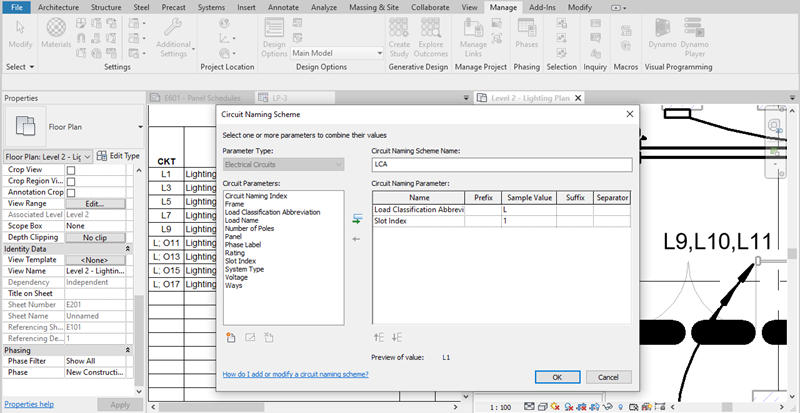
In addition to the circuit naming schemes provided by Revit, you can now define custom circuit naming schemes that will appear on panel schedules and floor plans. Circuit naming schemes are defined in the Electrical Settings->Circuit Naming dialog box, and can be set at the project level and for each panel.
This feature is also aimed primarily at users outside the US. Revit already allows for circuit names that include the panel or phase, but this way, you can customize the scheme to fit your needs. For example, you can assign abbreviations to your load classifications and have that abbreviation appear before (or after) the circuit number. You can even include shared parameters.
Additionally, a new Renumber Indexes command has been added in case the circuit numbers get misaligned while balancing your panels.
Rotate Phases for 1- and 2-Pole Circuits in Switchboards
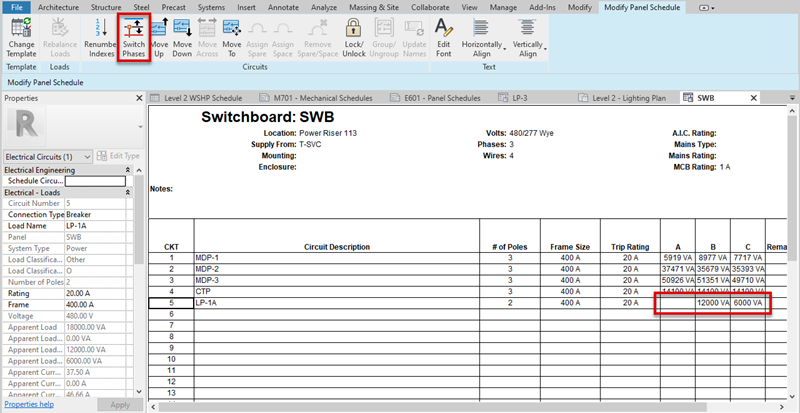
The new Switch Phases command on the Modify Panel Schedule ribbon allows you to rotate phases for 1- and 2-pole circuits in switchboards.
This feature is a significant improvement. Previously, users had to resort to complicated workarounds that were time-consuming and barely sufficient. Now, you can balance the phases on your switchboards in a matter of seconds.
Switchboard Max Number of Circuits Parameter
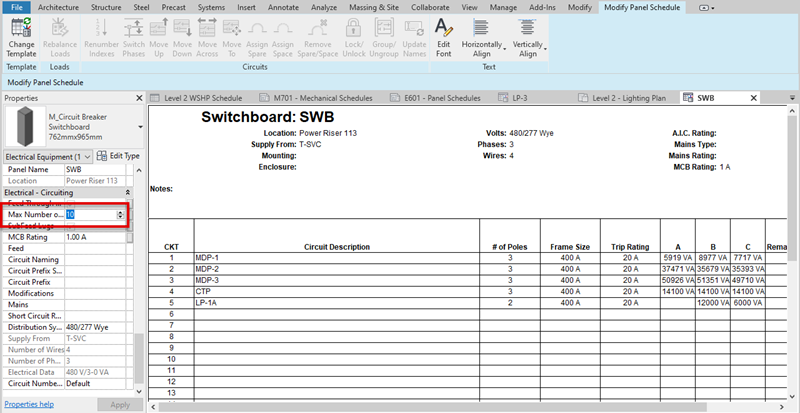
Switchboards now have a “Max Number of Circuits” parameter to limit how many devices can be circuited to them.
Previously, switchboards used the same “Max #1 Pole Breakers” parameter as panels to limit how many circuits they could hold. Unfortunately, that parameter ignored how devices are typically circuited to switchboards and could cause confusion (“The max is set to 12, why can I only circuit 4 panels to it?”). The new parameter is more appropriate for how switchboards operate.
Additional Parameters for Spaces and Spares
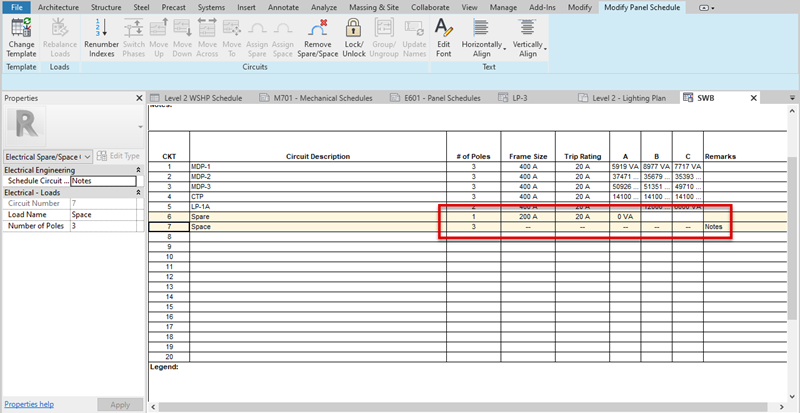
You can now set the Frame parameter for spares, and the Number of Poles and Schedule Circuit Notes parameters for spaces.
These additions may not have a significant impact on your workflow, but they will let you define the spaces and spares in your panels more fully.
